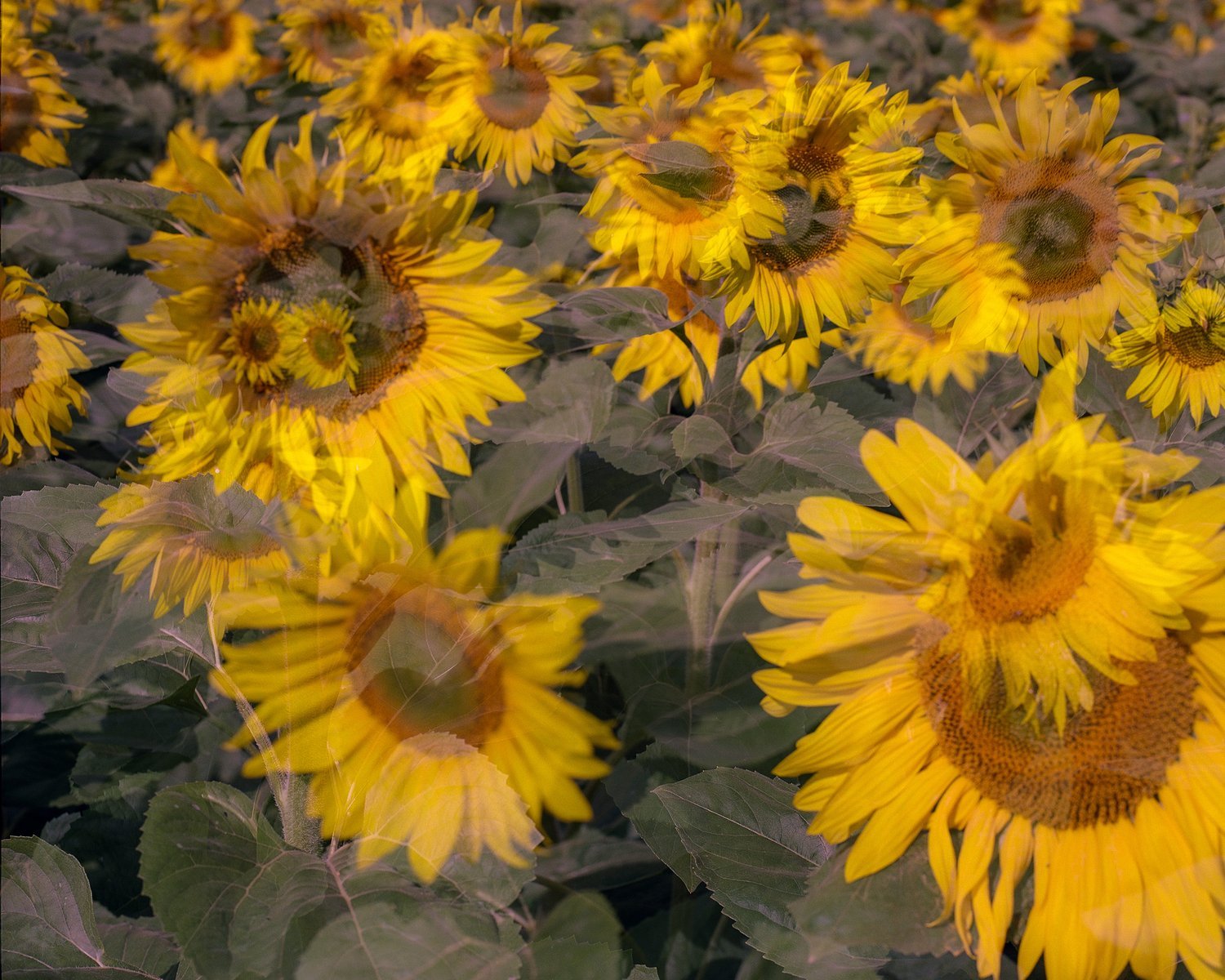Capturing the Sublime Through Photography
In 2018, photographer Casey Moore happened upon a roadside verge overflowing with wildflowers, a scene of unrestrained natural beauty. Drawn to its energy, he returned a few days later and shot his first double exposure on 10x8 film. Though he hadn’t planned it, this technique—layering one image over another—became the defining method for his ongoing series, But For the Wisdom.
The result? A collection of large-format compositions that burst with life, detail, and movement, offering an immersive experience unlike anything Moore had captured before.
A Riot of Life: Photography as an Expression of Nature’s Abundance
Two years after that first roadside discovery, Moore deliberately expanded the series, now comprising 20 unique compositions. His double-exposure technique creates images that feel alive, overflowing with the chaotic beauty of the natural world. Unlike traditional landscape photography, where stillness dominates, these works evoke a sense of constant movement, energy, and organic spontaneity.
Moore himself only sees the final image after developing it in the darkroom, a process that mirrors nature’s own unpredictability. Each photograph teems with layered textures, depth, and vibrancy, reflecting the uncontrollable force of life itself.
A Deeper Reflection: The Meaning Behind the Series
The series' title, But For the Wisdom, comes from a phrase attributed to Eric Weinstein:
"We have become gods but for the wisdom."
This sentiment resonates deeply with Moore, who grapples with humanity’s paradoxical relationship with nature. We possess the technology to do almost anything—yet we fail to act on the most urgent threats to our own survival. Through this series, Moore seeks to preserve and celebrate the natural world, encouraging us to pause, reflect, and reconsider our connection to the environment.
Casey Moore: A Vision Rooted in the Natural World
Born in Invercargill, New Zealand, and raised in Switzerland and London, Casey Moore has always sought a universal aesthetic, drawn to nature’s patterns, narratives, and interconnectivity. His work is a continuation of the artistic tradition of seeking the sublime, echoing the grandeur captured by painters of the 18th and 19th centuries, as well as pioneering photographers like Carleton Watkins and Ansel Adams.
"I've always been drawn to looking at the world through a lens. It's like visiting another dimension. I feel that childlike fascination every time I look through my camera. By making my prints by hand as large as possible, I want to reconnect with that child in me that saw wonder everywhere."
— Casey Moore
Moore’s work explores the interplay between the empirical and the spiritual, aligning with the principles of quantum physics, which tells us that everything is connected at an energetic level. His photographs, with their immense detail and layered compositions, visually express this invisible web of interconnectivity.
Casey Moore: But For the Wisdom
Curated By Carrie Scott
A Physical Process: The Darkroom as Part of the Art
Educated at Edinburgh University with a Masters in Psychology, Moore is largely self-taught in photography. His approach is deeply physical, involving large-scale hand-printing in his East Sussex darkroom. He often manipulates his images through chemical baths, using analog methods to massage and refine his compositions. This hands-on approach enhances the bodily experience of viewing his work, making his photographs feel as if they extend beyond the frame.
Exhibitions and Collections
Moore’s work has been exhibited internationally and is housed in private collections across the UK, New Zealand, Australia, the US, Russia, and Europe. In 2021, he debuted But For the Wisdom at the Affordable Art Fair in London, presented by Carrie Scott & Partners.
A Call to See, A Call to Protect
Through But For the Wisdom, Casey Moore invites us to truly see the world—to immerse ourselves in its beauty, its chaos, and its delicate interconnectivity. His photographs serve as both celebration and warning, urging us to recognize the sacred nature of the landscapes that sustain us—before it’s too late.

































